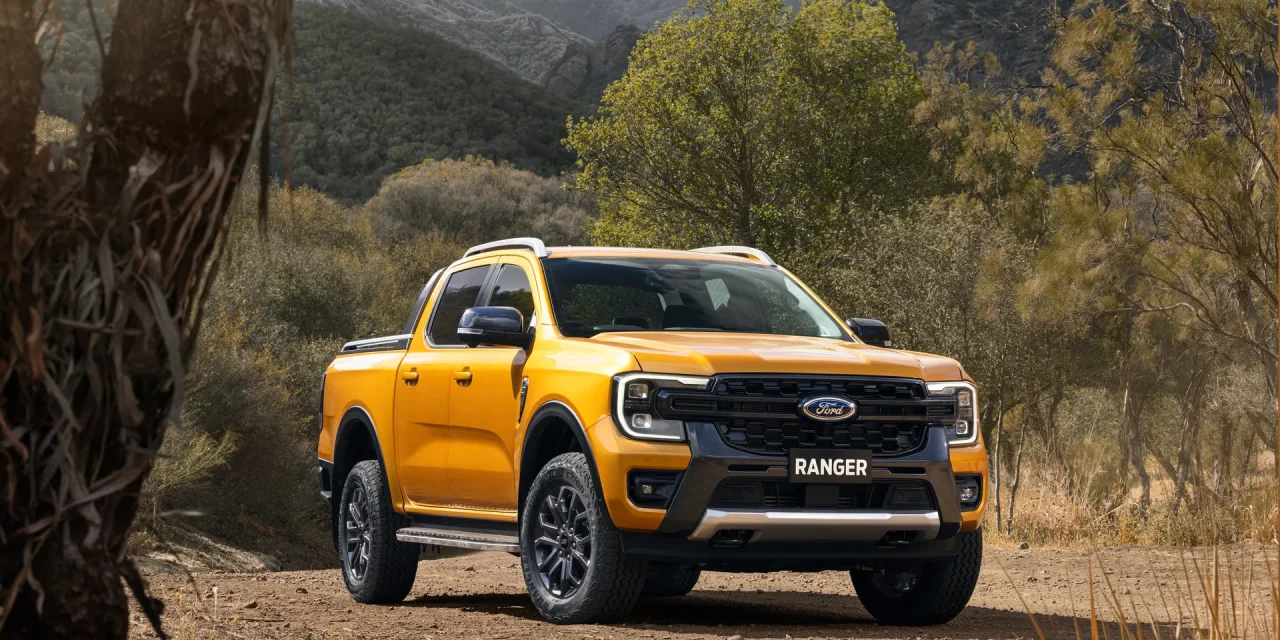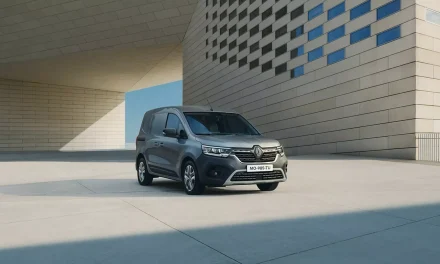When it comes to acquiring a van, one of the biggest decisions individuals and businesses face is whether to rent or buy. Each option comes with distinct financial implications, varying responsibilities, and unique advantages depending on the situation. Rental agreements often provide flexibility and lower short-term costs, making them attractive for occasional use or short-term projects. Buying a van, on the other hand, can lead to long-term savings and greater control over the vehicle, particularly for those with ongoing or high-frequency needs. This article explores the key factors involved in comparing the two options, including cost, maintenance, resale value, and long-term utility, to help readers make an informed decision that aligns with their budget and objectives.
Cost Comparison Between Renting and Buying a Van
The financial aspect is often the most critical factor when deciding between renting and buying a van. Renting typically involves predictable monthly or daily fees, which can include insurance and maintenance, reducing unexpected expenses. This makes it a straightforward option for those who need a van occasionally or for short periods. However, over time, frequent rentals can accumulate significant costs without building any equity.
Buying a van usually requires a larger upfront investment or ongoing finance payments, but the owner gains an asset that can be used freely and eventually sold. Ownership may also lead to cost savings over time, particularly when the van is used regularly. Tax incentives or depreciation claims may further reduce the total cost of ownership. That said, buyers must also factor in expenses like insurance, tax, maintenance, and potential breakdowns. The overall cost-efficiency of either option largely depends on how often and for how long the van will be used.
Factors That Influence Van Ownership Costs
Several variables can affect the true cost of owning a van. First, the purchase price varies widely depending on the make, model, age, and condition of the vehicle. New vans typically come with warranties but cost more upfront, while used vans are cheaper but may require more repairs.
Insurance premiums are another consideration, often higher for owned vans than for rentals. Owners also need to account for road tax, servicing, MOTs, and the eventual drop in resale value due to depreciation. Fuel costs, which are unavoidable in both cases, may be higher if an older or less efficient van is purchased. Additionally, businesses must consider the opportunity cost of tying up capital in a depreciating asset.
In contrast, renting can offer a clearer view of costs since the provider typically includes insurance and maintenance. Still, frequent rentals, peak season surcharges, and mileage limits can quickly erode any savings. A detailed analysis of total expenses over a set timeframe is essential to make an informed decision.
Financial Flexibility and Cash Flow Considerations
Financial flexibility is a key advantage of renting a van, especially for small businesses and individuals with limited capital. Rental agreements typically require little to no upfront payment, allowing users to allocate funds elsewhere. This can be particularly beneficial for startups or seasonal businesses that need to preserve working capital. Since rental costs are usually fixed and predictable, they make budgeting simpler and reduce the risk of unexpected financial strain.
In contrast, purchasing a van often involves a large initial outlay or long-term finance commitments. While financing can spread the cost over time, it may still tie up credit lines or reduce cash reserves. Buyers also assume full financial responsibility for the vehicle’s ongoing costs, which can fluctuate due to maintenance, repairs, and market fuel prices. For those with stable and consistent van usage, the long-term cost savings of ownership might outweigh the short-term liquidity benefits of renting.
How Rental Plans Affect Short-Term Budgeting
Short-term budgeting often benefits from the structure and transparency of van rental plans. Rental companies provide detailed pricing that includes insurance, maintenance, and breakdown cover, which eliminates the need to plan for unexpected expenses. This model is ideal for temporary projects, one-off events, or when a replacement vehicle is needed urgently.
Another benefit is the ability to match the vehicle to the task at hand. Renters can select a different van size or type as needs change, without being locked into a single asset. This adaptability reduces the risk of over- or under-investment in a vehicle. Additionally, renting eliminates depreciation concerns, which means users aren’t impacted by market fluctuations or resale value loss.
However, reliance on rentals does carry some financial risk. Costs can increase during peak seasons or if rental periods extend beyond the original plan. Overage charges for mileage or late returns may also apply. While renting offers short-term convenience, it’s essential to evaluate the total expense compared to ownership over longer periods.
Maintenance, Repairs, and Operational Responsibility
Owning a van places the full responsibility for maintenance and repairs on the owner. This includes routine servicing, MOT tests, tyre replacements, oil changes, and unexpected breakdowns. Over time, these costs can add up and are often unpredictable. Regular use increases wear and tear, especially for commercial vans, leading to higher maintenance demands and potential downtime that can impact productivity or income.
In contrast, rental agreements usually include maintenance and repair coverage as part of the service. This means that if the vehicle breaks down or requires servicing, the rental company manages it, often providing a replacement vehicle. This greatly reduces hassle and limits the financial risk associated with mechanical issues. For those seeking peace of mind and minimal disruption, especially in the short term, renting offers a clear advantage in operational simplicity.
However, buyers who keep their van in good condition and follow regular maintenance schedules can often control long-term costs effectively. With ownership, there is also the possibility to select a reliable model known for durability and lower repair frequency, which helps reduce the total cost of ownership over time.
What Maintenance Costs Look Like for Van Owners
Maintenance costs for van owners can vary widely depending on the age, make, model, and usage of the vehicle. Newer vans may come with manufacturer warranties that cover major components for several years, reducing early maintenance expenses. However, once out of warranty, owners must shoulder all associated costs.
Routine costs include oil and filter changes, brake pad replacements, fluid top-ups, and tyre servicing. Over time, more expensive repairs such as clutch replacement, suspension work, or electrical system faults may arise. These unexpected expenses can strain budgets, especially for sole traders or small businesses that rely heavily on their vehicle.
Preventative maintenance is essential for keeping costs manageable. Many owners opt for service plans or scheduled check-ups to avoid larger issues. It’s also worth noting that downtime caused by repairs not only impacts finances but can disrupt operations. While rental agreements often bypass this risk, owners with the ability to manage their van responsibly may still find ownership more economical in the long run.
Depreciation and Resale Value of Vans
Depreciation is a major factor to consider when buying a van. From the moment a new van is driven off the forecourt, its value begins to decline. Typically, a van loses the most value in the first three years, after which the rate of depreciation slows. For business owners or individuals planning to resell their van in the future, understanding this process is essential in calculating total ownership cost.
Unlike renting, where the user never owns the vehicle, purchasing allows for potential resale value to be recouped. A well-maintained van with a full service history and low mileage can still command a decent price in the second-hand market. This value can offset some of the initial investment, especially if the van is used over a long period. However, market conditions, demand for specific models, and general wear and tear all influence how much an owner can realistically expect to recover.
Understanding Asset Value Over Time
The value of a van over time depends on several elements, including age, condition, mileage, and market trends. Newer vans depreciate faster, with some models losing up to 40% of their value in the first year. After five years, a van may retain only 30–40% of its original purchase price, depending on its upkeep and brand reputation.
This declining value has a direct impact on the overall cost of ownership. While buyers can sell the van to recover part of the cost, the loss through depreciation is significant and must be factored into any financial analysis. Additionally, selling a van involves time, effort, and sometimes fees through dealers or online platforms.
Rental agreements eliminate these concerns entirely. Since the user doesn’t own the vehicle, depreciation is irrelevant. This is particularly beneficial for businesses that want to avoid the hassle of reselling or for those who prefer predictable monthly costs without the worry of asset management. However, it also means there’s no long-term value to recover from rental payments, making ownership potentially more economical for extended use.
Suitability for Long-Term and Short-Term Needs
Whether renting or buying a van is the better option often depends on how long and how frequently the van will be used. Renting is typically more cost-effective for short-term or occasional needs. For example, individuals moving house, businesses handling temporary contracts, or seasonal operations may benefit from the flexibility and lower commitment of a rental. It allows users to select the right size and type of van as required, without being tied to a single vehicle.
In contrast, buying a van is generally more practical and economical for long-term or regular use. Businesses that require daily transportation, tradespeople, or delivery services often find that ownership provides better value over time. The ability to customise the vehicle, use it without restrictions, and potentially resell it later makes buying a more strategic choice for continuous use.
Evaluating Usage Duration and Frequency
The frequency and duration of use play a critical role in this decision. Someone needing a van for a week or two every few months will likely find renting to be the most efficient and affordable choice. It eliminates the burden of storage, maintenance, and long-term financial commitment, especially when the van would otherwise sit unused for long stretches.
On the other hand, if the van is needed daily or several times a week, the cumulative cost of rentals can quickly exceed the monthly payments of a purchased vehicle. Ownership also avoids the hassle of repeatedly booking and returning vehicles, offering greater reliability and convenience for ongoing tasks.
Another point to consider is availability. During peak seasons or in certain locations, rental vehicles may be in short supply or more expensive, potentially causing delays or forcing compromises on the vehicle type. Owners are not subject to this limitation, as the vehicle is always at their disposal. Ultimately, understanding how often and for how long the van is needed is essential to determine which option provides better value and convenience.
Final Verdict: Which Option Saves More in the Long Run?
Determining whether renting or buying a van is cheaper in the long run depends largely on individual needs and usage patterns. For short-term or infrequent use, renting offers predictable costs, minimal responsibility, and the flexibility to choose the right vehicle when needed. It prevents large upfront investments and ongoing expenses such as maintenance or insurance, which can be ideal for individuals or businesses with occasional transport needs.
However, for consistent or long-term use, purchasing often presents better value. While the initial outlay is higher and responsibilities are greater, ownership allows the user to build equity in the vehicle and potentially recover some costs through resale. Over time, this can be more cost-effective than paying repeated rental fees, especially when the van is used regularly and maintained well.
Key Takeaways for Smarter Decision Making
Choosing between renting and buying a van should involve careful consideration of both financial and practical factors. Here are some points to guide the decision:
- Renting is ideal for short-term, seasonal, or unpredictable needs.
- Buying suits those who require frequent, long-term van use.
- Ownership allows for resale and long-term savings but involves greater responsibility.
- Renting includes services like maintenance and insurance but offers no asset value.
- Availability, flexibility, and cash flow are important considerations for each option.
By assessing usage frequency, budget, operational requirements, and long-term goals, individuals and businesses can select the option that best supports their objectives while maintaining cost efficiency.
Conclusion
The choice between renting or buying a van ultimately hinges on how the vehicle will be used and the financial goals behind that use. Renting offers low-commitment access with predictable expenses, making it a sensible choice for short-term or occasional needs. It removes the complexities of maintenance, insurance, and resale, which can be beneficial for those seeking convenience and flexibility.
Buying, on the other hand, becomes increasingly cost-effective for long-term or regular use. Despite the higher initial costs and responsibilities, ownership provides unrestricted access, potential resale value, and more control over how the vehicle is used. Over time, these advantages often outweigh the recurring costs of renting, particularly for businesses or individuals with consistent transport needs.
In making a decision, it is important to analyse both immediate and future needs, weigh up the total cost of each option, and consider how the vehicle fits into broader financial or operational plans. Whether the goal is to save money, maximise convenience, or support business growth, a well-informed approach will lead to the most effective outcome.





